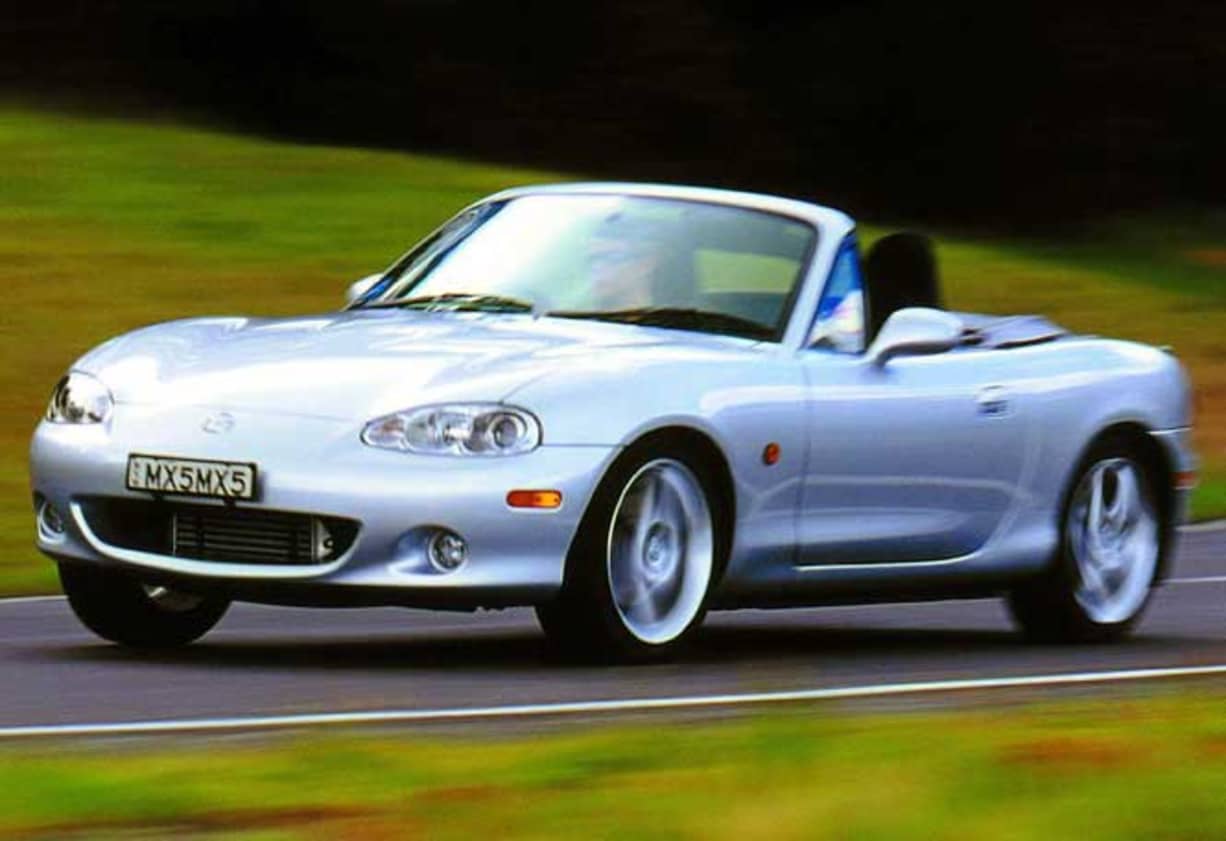The MX5's chassis always seemed as though it could handle more grunt and the engine appeared capable of being fitted with a turbocharger, so it seemed inevitable it would eventually be turbocharged.
But Mazda had no plans to turbocharge its sweet little roadster and it was left to Mazda Australia and its veteran motorsport manager, Allan Horsley, to see the project through to reality
MODEL WATCH
The Mazda MX5 has been one of the great motoring success stories of the last 20 years. It was the car that made owning and driving open-top cars acceptable again after many years in which they were shunned. It was the car that made motoring fun again.
If there was a criticism of the MX5 it was that it lacked power. Not everyone believed it should have more grunt. The original 1.6-litre engine was plenty for most owners, but those with a motorsport bent wanted more power to exploit the roadster's competent chassis.
Mazda responded by increasing the size of the engine to 1.8 litres and it was then refined with sequential valve timing. But some owners wanted more. That came early in 2002 when Mazda delivered the first of 100 SP models developed and built in Australia.
The heart of the SP was its turbocharged engine. Mazda took the MX5's 1.8-litre double-overhead camshaft four-cylinder engine and added a turbocharger to boost power by 44kW and torque by 108Nm.
Boost pressure was set at a conservative 7.5-8.0 psi (0.54 bar) in the interests of engine durability, but peak output still surged to 157kW at 6800 revs and 289Nm at 4600 revs.
It was enough to have the little two-seater racing to 100km/h in six seconds, impressive given the standard car required 8.5 seconds for the same journey.
Other features of the SP included anti-skid brakes, 16-inch alloys, remote central locking, power windows, CD player, and dual airbags.
There were also some extra touches such as a polished alloy fuel filler cap, gearshift knob, door scuff plates, air vent surrounds, and special SP badges.
IN THE SHOP
The main thing to look for when inspecting a Mazda MX5 SP is evidence of competition. Hard driving isn't necessarily harmful if the car has been well serviced, but if it hasn't been serviced, competition can be detrimental to a car's health.
Look for holes that have been drilled in the body work for things such as a roll bar, fire extinguisher, and other equipment under the bonnet. It is best to reject a car that has clearly had a hard life, but don't be so concerned about one that has been used for the occasional club event.
It is highly likely most SPs will have been owned by members of the MX5 club, so talk to members about them to ascertain their history before handing over your cash.
Lift the oil filler cap and take a look inside the valve covers for sludge, which might suggest a lack of servicing. Turbo engines need more regular oil changes.
CRUNCH TIME
Safety in the MX5 is all about handling and braking. Its agile chassis and responsive steering, along with powerful anti-skid disc brakes, are a potent recipe when it comes to avoiding collisions. Add dual front airbags for that moment a collision becomes unavoidable and you have a strong safety story.
Mazda MX-5 2000:
| Engine Type | Inline 4, 1.8L |
|---|---|
| Fuel Type | Premium Unleaded Petrol |
| Fuel Efficiency | 9.5L/100km (combined) |
| Seating | 2 |
| Price From | $5,830 - $8,140 |


.jpg)

.jpg)


.jpg)

